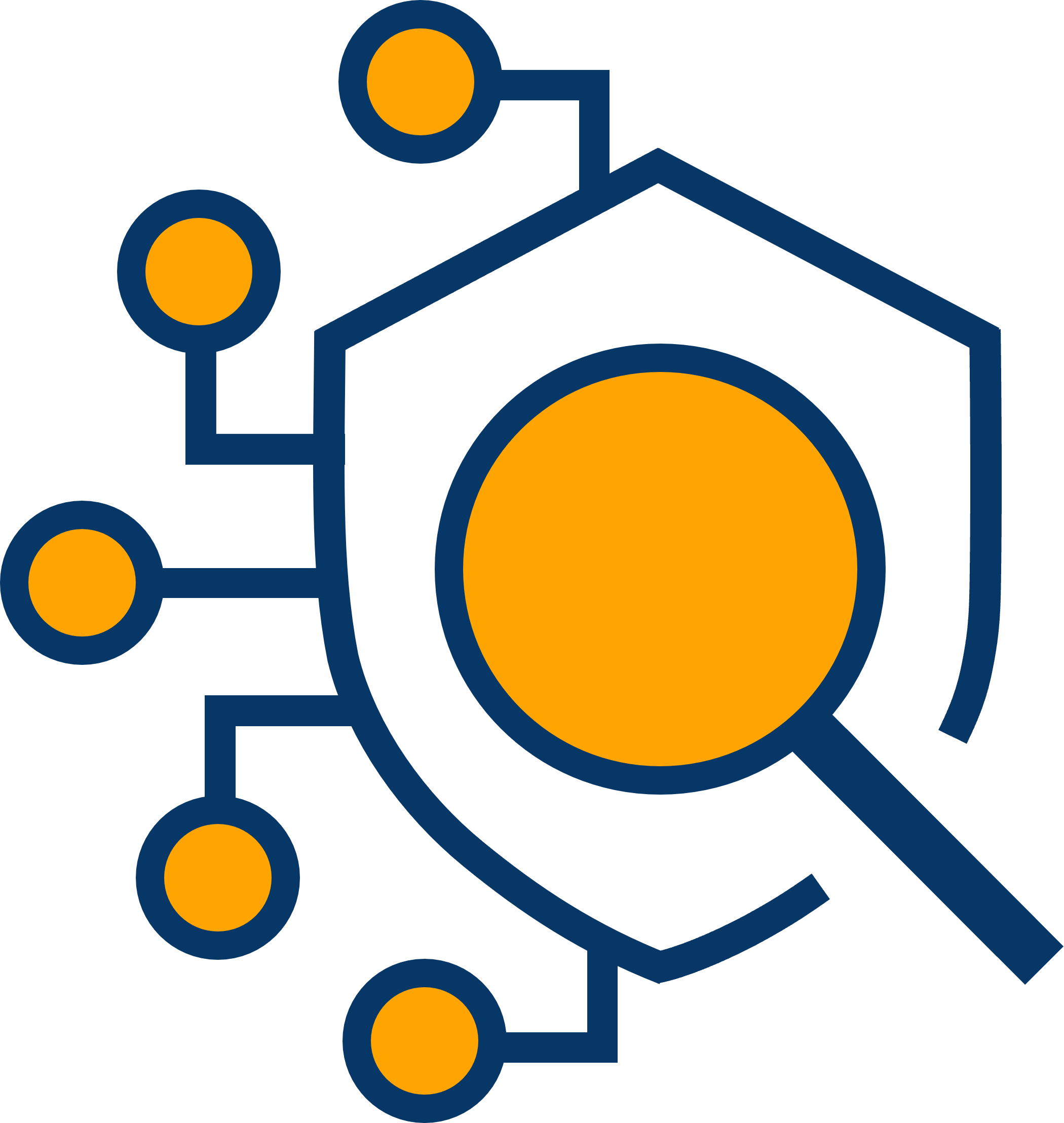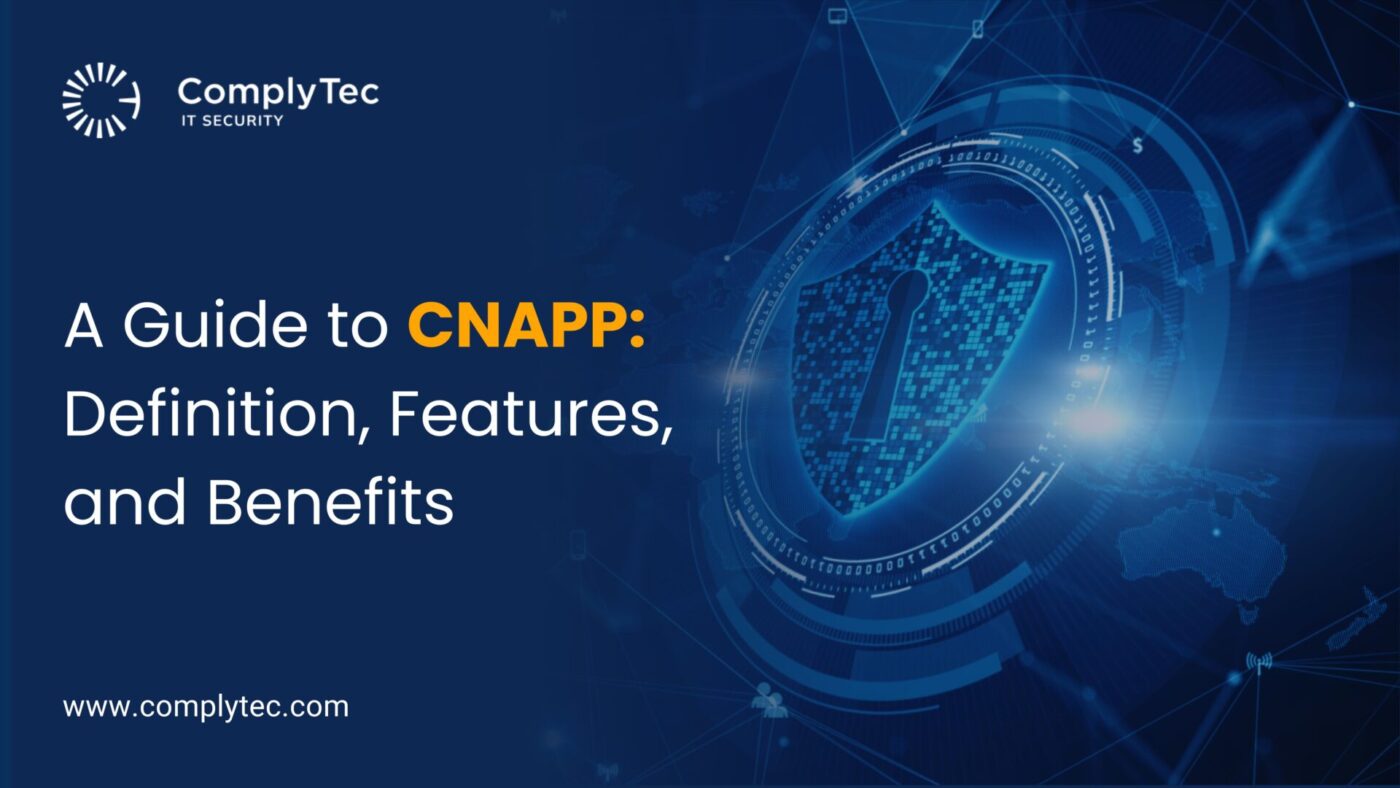According to Gartner, cloud-native platforms will serve as the foundation for more than 95% of new digital initiatives by 2028, a significant increase from less than 50% in 2023. These statistics highlight the emergence and importance of cloud-native platforms.
Around 89% of organizations have adopted multi-cloud environments owing to their many benefits, including accessibility, availability, and centralized data storage. While multi-cloud environments and cloud infrastructures are beneficial in many ways, they also pose unique challenges. A report revealed that almost 50% of enterprises stated that understanding app dependencies is their biggest challenge when migrating to cloud platforms, followed by assessing cloud costs and technical feasibility.
As a response to these cloud challenges, Gartner coined the term Cloud Native Application Protection Platform (CNAPP) in 2021. CNAPP is a cloud security solution that combines the capabilities of various cloud security tools to help your organization protect assets across cloud infrastructures and environments. This article will explore its definition, how it works, its features and capabilities, and its benefits.
What is a Cloud Native Application Protection Platform?
According to Gartner, the definition of cloud-native application protection platforms (CNAPPs) is as follows:
Cloud-native application protection platforms (CNAPPs) are a unified and tightly integrated set of security and compliance capabilities designed to secure and protect cloud-native applications across development and production.
CNAPP solutions unify the capabilities of multiple cloud-based security solutions, including container scanning, cloud security posture management (CSPM), infrastructure as code (IaC) scanning, cloud infrastructure entitlement management (CIEM), cloud workload protection platform (CWPP), and vulnerability or configuration scanning.
CNAPP tools also help organizations bridge the gap between their development operations(DevOps) and development, security, and operations (DevSecOps) by incorporating security measures during the development stages. With CNAPP security solutions, organizations can easily ensure their organizational data assets are compliant.
Let us move on to understanding how CNAPP works.
How Does CNAPP Work?
Here is how CNAPPs work when deployed within organizations:
Provides Visibility
CNAPP tools use an agentless approach to scan workloads and cloud assets and provide complete visibility into an organization’s cloud infrastructure. They unify different types of cloud assets located across multiple cloud environments within a single platform. They also allow organizations to gain real-time access to risks posed by sensitive cloud assets, such as vulnerabilities, threats, malware, unauthorized access, etc., to give you a comprehensive view of the organization’s security posture.
Unifies Security Solutions
A cloud-native application protection platform is a single platform that offers a single process to ensure consistency across your organization’s cloud environments. It unifies the capabilities of various cloud security solutions, such as cloud security posture management (CSPM), cloud workload protection platform (CWPP), cloud infrastructure entitlement management (CIEM), etc., to provide your organization with end-to-end visibility of cloud security risks. Through its agentless approach, it also aids in preventing and mitigating the impact of these security risks.
Prioritizes Risks
CNAPPs detect risks within organizations’ cloud environments and infrastructure and examine their context, enabling organizations to gain realistic insight into their security posture. With contextual insight, CNAPPs prioritize security risks based on their severity and criticality, helping security teams focus their efforts on mitigating and remediating the impact of severe risks and reducing their attack surface.
Capabilities and Features of CNAPP
An efficient CNAPP helps organizations secure their applications, assets, and data across their cloud infrastructure. It does this by combining the capabilities of various cloud application security solutions. Each of these security solutions addresses a specific cloud security concern. By integrating all cloud security capabilities into a single platform, CNAPP serves as the go-to cloud-native security platform. Here are the various components of CNAPP:
Cloud Security Posture Management (CSPM)
CSPM refers to a set of tools and practices for maintaining the security posture of an organization’s multi-cloud environments. The process involves continuously monitoring cloud environments to detect security threats, vulnerabilities, or misconfigurations that may lead to potential security breaches. Moreover, CSPM helps organizations gain visibility into multi-cloud environments, ensuring assets within these environments are protected and compliant. CSPM is a crucial feature of CNAPP because it helps the organization’s security teams monitor, detect, and remediate vulnerabilities, misconfigurations, and risks associated with sensitive data.
Cloud Workload Protection Platform (CWPP)
CWPP is a cloud security solution that helps organizations secure their cloud workloads located across public, private, and hybrid cloud environments. It protects your organization’s cloud workloads by continuously monitoring and scanning them to detect threats or vulnerabilities. Upon identification, it remediates potential threats and scans workloads to detect arising security threats. CWPP enhances CNAPP capabilities by allowing organizations to gain a comprehensive view of their cloud assets across their cloud infrastructure, regardless of location.
Cloud Infrastructure Entitlement Management (CIEM)
CIEM is a cloud security solution that helps organizations manage their cloud identities by controlling user access and permissions to these identities. It provides complete visibility into user permission across cloud environments, preventing unauthorized or over-privileged access. Moreover, CIEM also helps organizations apply the Principle of Least Privilege(PoLP) to ensure that users can access only what is necessary to perform their tasks. CIEM is an integral feature of CNAPP as it helps organizations consistently monitor and manage user privileges across different cloud environments and revoke them if necessary.
Cloud Detection and Response (CDR)
CDR is a cloud-native security solution that helps detect, analyze, and remedy vulnerabilities and threats within cloud environments. It uses various cloud security capabilities, such as threat intelligence, security information and event management (SIEM), and log analysis, to proactively detect security risks within the cloud infrastructure. CDR is a crucial component of CNAPP. It helps organizations detect security risks in real-time by analyzing cloud activity and audit logs, alerting security teams to take action to prevent a potential attack immediately.
Continuous Integration and Continuous Deployment Security (CI/CD)
A CI/CD pipeline refers to the process from code creation to producing a particular software or application. It serves as the foundation of DevOps. CI/CD security refers to security practices carried out to detect security vulnerabilities and threats during the development stages. Doing so will prevent organizations from building flawed or misconfigured applications. As mentioned above, CNAPP bridges the gap between DevOps and DevSecOps, and CI/CD security plays a critical role in bridging this gap to achieve increased operational efficiency.
Let us explore CNAPP’s benefits.
Benefits of CNAPP
A common dilemma with organizations looking to secure their cloud infrastructure is whether to deploy independent cloud security software or an integrated cloud-native application protection platform. With a cloud-native security platform, organizations can benefit from the following:
Enhanced Visibility
Due to varied processes and features, traditional and independent cloud security software and solutions struggle to provide a comprehensive view of cloud environments. This often leads to inconsistencies within the organization’s security posture. The most crucial benefit of CNAPPs is that they offer end-to-end visibility into the organization’s cloud infrastructure.
With their agent-less approach, organizations can identify which cloud assets may pose vulnerabilities and risks within cloud environments, protect these assets, and remediate the severity of risk. Moreover, CNAPPs continuously monitor cloud infrastructure and environments, helping security teams identify anomalies, detect threats in real-time, and prioritize remediation efforts.
Improved Operations
When organizations deploy stand-alone multiple cloud application security solutions with varied security capabilities, they prove to be expensive and complex. Moreover, security teams may be distracted by the complexity of these platforms, which may slow down operations.
Deploying CNAPPs within an organization can be cost-effective, as they integrate various cloud capabilities into a single platform. With a unified and automated CNAPP, organizations can quickly achieve operational efficiency, and their security teams can prioritize other security measures.
Earlier Risk Detection
With complete visibility into your organization’s cloud infrastructures, CNAPPs help detect risks before they escalate into a data breach or cyberattack. They also continuously monitor cloud environments for vulnerabilities and misconfigurations. With advanced features such as real-time and intelligent threat detection, CNAPPs identify risks early in the development cycle, allowing organizations to address security issues proactively.
Moreover, CNAPPs can automatically categorize and correlate the risks based on their context and severity to identify attack paths. This helps security teams immediately prioritize remediation efforts in securing sensitive assets.
Automated Remediation
CNAPP automates risk detection and alerts organizations’ security teams when a threat or misconfiguration is detected. It also recommends predefined remediation actions, such as applying patches, adjusting configurations, or isolating affected resources. This significantly reduces the response time, ensuring threats are neutralized before they can cause substantial damage.
Additionally, automated remediation ensures that the organization is compliant by maintaining consistency in security practices across different environments. By incorporating automated remediation measures, CNAPP enhances organizations’ security posture and allows security teams to focus on more strategic initiatives.
We have discussed the definition of CNAPP and its features and benefits. While your organization embarks on its journey to cloud security, it doesn’t have to embark on this journey alone! Your organization can always seek the help of the best CNAPP vendors to navigate its cloud security journey seamlessly!
Embark on Your Cloud Security Journey with ComplyTec!
ComplyTec is your organization’s trusted partner for cloud security management! We partner with your security team to develop cybersecurity solutions that strengthen protection against threats and vulnerabilities based on your organizational needs.
ComplyTec has provided IT solutions to various North American organizations, including Blue-chip companies and government agencies. We bring vulnerability management and security expertise to your organization while enhancing its operational efficiency.
Your Cloud Security Partner for Success – ComplyTec!
Contact Us
FAQs
- Who coined the term CNAPP?
Gartner coined the term CNAPP (Cloud-Native Application Protection Platform) and introduced it as a category of security solutions designed to address the unique security challenges of cloud-native applications.
- What does CNAPP do?
A CNAPP provides comprehensive security for cloud-native applications. It integrates several security functions to protect cloud-native applications throughout their lifecycle. Some of the functionalities of a CNAPP include unified visibility, vulnerability management, compliance monitoring, threat detection and response, user access management, and cloud-native application security.
- What is the difference between SIEM and CIEM?
SIEM (Security Information and Event Management) and CIEM (Cloud Infrastructure Entitlement Management) are different security solutions for other purposes. SIEM aggregates and analyzes log data from various sources to detect, analyze, and respond to security incidents. At the same time, CIEM focuses on managing and securing identities and entitlements within cloud environments. While SIEM protects your organization’s IT infrastructure, CIEM caters to securing your cloud infrastructures alone.
- Who are the best CNAPP vendors my organization can partner with?
According to Gartner, the best CNAPP vendors your organization can partner with are as follows:
- Tenable Cloud Security
- Trend Micro Deep Security
- Prisma Cloud by Palo Alto Networks
- Orca Security
- Microsoft Defender for Cloud
- Cloudguard Cloud Native Security Platform by Checkpoint
- Crowdstrike Falcon Cloud Security
- Aqua Cloud Security Platform
- What is the difference between CNAPP, CSPM, and CWPP?
While CNAPP, CSPM, and CWPP are different cloud security solutions, they are interrelated.
CNAPP is a unified platform integrating multiple cloud security capabilities to secure cloud-native applications. It consolidates cloud security solutions such as CSPM, CWPP, and other security capabilities to provide end-to-end protection.
CSPM focuses on ensuring cloud environments are configured securely. It identifies misconfigurations, enforces security policies, and ensures compliance with standards and regulations. In comparison, CWPP protects workloads running in cloud environments and provides security for virtual machines, containers, and serverless functions, including vulnerability management, runtime protection, and threat detection.
In summary, CNAPP is a platform that utilizes the functionalities of both CSPM and CWPP, providing a unified approach to securing cloud-native applications throughout their lifecycle.
Source
- Crowdstrike
- Zscaler
- Paloalto Networks
- Orca Security
- Checkpoint
- Gartner
- Cloud Defense
- Global Market Insights
- The New Stack
- Wiz
- Wiz
- Wiz
- Wiz
- Paloalto Networks
- Wiz



